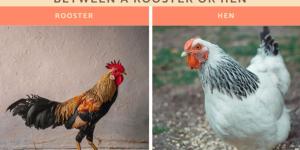Differences Between Dragonflies and Damselflies


Dragonflies and damselflies are common sights near freshwater, often mistaken for each other. Despite their shared habitat, these insects belong to distinct suborders within the Odonata family. Millions of years of evolution have shaped them into unique creatures with distinct characteristics.
This AnimalWised article will equip you to tell dragonflies and damselflies apart. We'll explore their physical differences, from their eye placement to their wing shapes. We'll also delve into their preferred habitats and hunting strategies, revealing how evolution has shaped their roles in the aquatic ecosystem.
Are dragonflies and damselflies in the same family?
No, dragonflies and damselflies are not in the same family, but they are closely related. Dragonflies and damselflies share a fascinating evolutionary journey, but their paths diverged millions of years ago.
Fossil records suggest both dragonflies and damselflies have existed for over 300 million years, making them some of the earliest flying insects.
Both dragonflies and damselflies belong to the same order, Odonata. This order encompasses all flying insects with elongated bodies, large eyes, and two pairs of wings. Within Odonata, there are two suborders:
- Anisoptera: this suborder includes dragonflies. They are known for their robust bodies, powerful wings held horizontally at rest, and the ability to rotate their heads almost 360 degrees.
- Zygoptera: this suborder includes damselflies. They are typically smaller and more delicate than dragonflies, with slender bodies, wings held vertically at rest, and limited head movement.
They likely originated from a common ancestor that thrived during the Paleozoic era. Over time, this ancestor evolved into the two distinct lineages mentioned above.
How to tell the difference between a dragonfly and a damselfly?
Although dragonflies and damselflies share similarities, several distinctions set them apart, evident even to the casual observer:
Eyes: Dragonflies typically have larger eyes that touch or meet at the top of the head, while damselflies' eyes are separated.
Mouths: Dragonflies possess large, robust jaws suited for capturing prey in flight, whereas damselflies have smaller, weaker jaws adapted for feeding on smaller organisms found in water.
Wings: Dragonflies' wings differ in size and shape, with hind wings usually wider than forewings. Their wing veins form a complex network, while in damselflies, veins are finer and less prominent. Damselflies' wings are more similar in size and shape, often held closed vertically over their abdomen.
Body: dragonflies typically have stockier, wider bodies, while damselflies have slimmer, elongated bodies.
Size: On average, dragonflies are larger than damselflies, although there is variability within each group.
Abdomen: when at rest, dragonflies extend their abdomen backward, while damselflies often hold it in a straight-down position.
Coloration: dragonflies tend to exhibit brighter colors and more striking patterns compared to damselflies, which often have duller hues.
Flight: Dragonflies are known for their fast, agile flight, capable of rapid direction changes and acrobatics. Damselflies, on the other hand, have slower, smoother flight with more controlled movements.
Resting position: Dragonflies rest with their wings held out flat at their sides, while damselflies often rest with their wings held together vertically above their back.
These differences highlight the distinct characteristics of dragonflies and damselflies, despite their outward similarities.

Other differences between dragonfly and damselfly
Here are some additional differences between dragonflies and damselflies that go beyond the easily observable physical characteristics:
Hunting strategies
Dragonflies are formidable aerial predators with excellent vision. They hunt other flying insects mid-air, often catching them with their spiny legs.
Damselflies, on the other hand, are less aggressive hunters. They tend to perch on vegetation and wait for prey to come close, primarily feeding on smaller insects like mosquitoes.
Head movement
Dragonflies have an incredible ability to rotate their heads almost 360 degrees, giving them a wider range of vision for hunting and predator avoidance.
Damselflies have more limited head movement, typically only able to turn their heads about 180 degrees.
Habitat
While both dragonflies and damselflies prefer freshwater habitats near ponds, lakes, and streams, their specific preferences can differ. Dragonflies often inhabit open areas around water, while damselflies might favor areas with more vegetation for perching and camouflage.
Nymph stage
The aquatic nymph stage of a dragonfly is a fierce predator, feeding on tadpoles, small fish, and other aquatic invertebrates.
Damselfly nymphs are also aquatic but typically smaller and less aggressive hunters, feeding on mosquito larvae and other tiny organisms.
Lifespan
Dragonflies generally have a longer lifespan compared to damselflies. Adult dragonflies can live for several months, while damselflies might only survive for a few weeks.
Intrigued by how animals adapt and evolve? Dive deeper into the fascinating world of animal origins and evolution in our other article.
If you want to read similar articles to Differences Between Dragonflies and Damselflies, we recommend you visit our Facts about the animal kingdom category.
- Bomphrey, RJ, Nakata, T., Henningsson, P., & Lin, H.T. (2016). Flight of the dragonflies and damselflies . Philosophical Transactions of the Royal Society B: Biological Sciences, 371(1704), 20150389.
- Johnson, D. M. (1991). Behavioral ecology of larval dragonflies and damselflies . Trends in Ecology & Evolution, 6(1), 8-13.
- Paulson, D. (2019). Dragonflies and Damselflies-a natural history . Princeton University Press.
- Villalobos-Jimenez, G., Dunn, A., & Hassall, C. (2016). Dragonflies and damselflies (Odonata) in urban ecosystems: a review . European Journal of Entomology, 113, 217-232.






